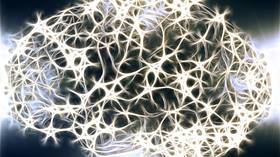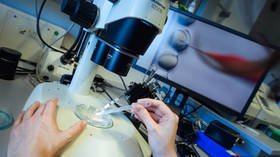Lab-grown HUMAN ‘mini-brains’ learned to control muscles

A miniature brain grown in a lab from human stem cells has developed a mind of its own – or at least enough awareness to send out neural ‘tendrils’ to connect to the spinal cord and muscle tissue of a mouse, then flex that muscle.
“We like to think of them as mini-brains on the move,” said Madeline Lancaster of Cambridge University, who led the experiment with the Medical Research Council’s Laboratory of Molecular Biology and published the results in Nature: Neuroscience.
Also on rt.com Could light and sound cure Alzheimer’s? Exciting mice experiment suggests promising potentialThe mini-brain is their most sophisticated “organoid” yet, approaching the complexity of a 12-16 week old fetus’ brain. While the researchers claim it’s “too small and primitive to have anything approaching thoughts, feelings or consciousness,” there’s no accurate way to measure consciousness, and the “organoid” has a couple million neurons – meaning it’s operating with the same grey matter equipment as the average cockroach.
After placing a tiny 1mm-long piece of spinal cord and back muscle from a mouse next to the germinating brain-blob, the researchers watched (presumably in awe) as the brain shot out neuronal connections to intertwine with the spine, eventually sending out electrical impulses and causing the mouse muscle to twitch.
Also on rt.com ‘Jaw-dropping moment’: Scientists discover mysterious new communication mechanism in the brainThe size of the organoid had previously been limited by its ability to access nutrients – once the “blob” got too large, the center starved. This time, the researchers just cut it into tiny slices and placed them in nutrient-rich liquid, allowing the insides to thrive while connections between the slices continued to grow and develop in complexity for a full year.
The researchers plan to use their mini-brains to study nervous system development and brain disorders – that is, unless the brains become self-aware and start studying them first.
Like this story? Share it with a friend!














